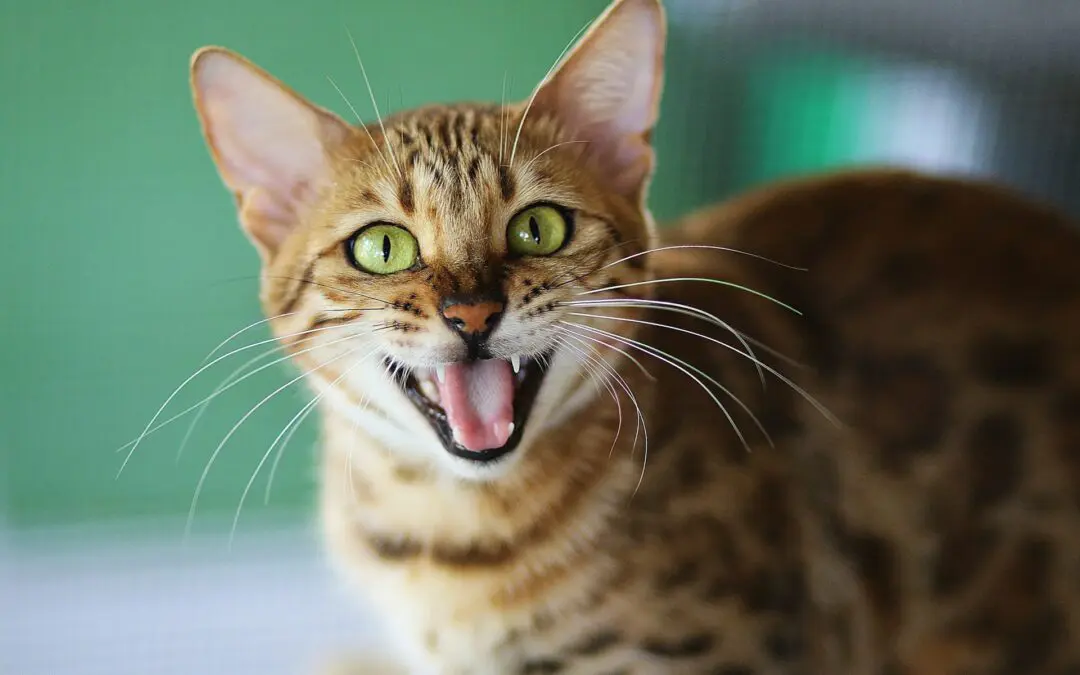Brushing your cat’s teeth is a great way to protect their health and prevent tooth loss when they get older. Along with yearly dental checkups, daily brushing will remove plaque and keep your cat’s teeth and gums healthy. It prevents dental pain so they can comfortably eat their kibble, reduces their risk of oral infections, and keeps their breath fresh. Here’s how to brush your cat’s teeth like an expert.
Step-By-Step Guide to Brushing Your Cat’s Teeth
When brushing your cat’s teeth remember to take it slow. If you feel yourself—or your cat—getting stressed, stop, regroup, and try again later. Consistency is key here. Doing a little bit of brushing every day is better than doing a lot every once and a while.
Step 1: Get Ready
First, you’ll need to assemble the tools you’ll need. If your cat is not used to tooth brushing, trim their weapons…sorry, we meant claws. Too-long nails can be painful in general for your cat. But they can be painful for you when they’re aimed at your arm.
Here’s what you’ll need:
- A towel. If you think your cat will be calmer in a towel swaddle, make sure you have one on hand.
- A soft-bristled toothbrush the right size for your cat’s mouth
- A cat-safe toothpaste in your cat’s favorite flavor
- A nice pile of dental treats. (Bribery goes a long way in getting a cat to allow toothbrushing.)
Step 2: Secure Your Cat
Some cats are perfectly content to let you manhandle their mouths for their brushing. Others might not be so relaxed. How you secure your cat for tooth brushing is entirely up to them and you. We recommend going slowly at first and finding which way works best for them.
Here are three different methods you can try:
- Try petting them and lifting their lips. If they allow it without resistance, continue on to brushing.
- Offer some treats to make your cat want to stay.
- If the claws still come out, gently burrito your cat in the towel. If you can, get another person to gently hold your cat while you do the brushing.
Step 3: Brush Carefully
- Brush the outside of your cat’s teeth close to the gumline.
- Use gentle, circular motions.
- Concentrate on the areas that touch the lips to start. This is where the most bacteria build up. Once your cat is used to brushing, work on getting all 30 of their teeth from all sides.
Just remember, if your cat seems stressed out, let them go. You don’t want to damage their trust in you.
Step 4: Allow Them to Slink Off
Your cat just went through something they do not understand. Try not to take it personally if they decide to ignore you for a little while afterwards. If your cat does want to stay, give them extra snuggles or play with their favorite toy. This will help the experience stay positive.
Why Do You Need a Special Toothpaste for Cats?
While you could get away with using a baby toothbrush for your cat, DO NOT use toothpaste that’s intended for humans. Many types of toothpaste have ingredients that are poisonous to pets. Things like fluoride, xylitol, and cleansing agents can be very harmful if your cat swallows them.
Luckily, there are several types of cat toothpaste available for you to try. Plus, they come in cat-approved flavors like seafood, chicken, and beef. Yummy…for your cat. Specialty dental brushes might not be necessary, but they can help you brush with accuracy. Smaller brush heads, differently shaped bristles, and other adaptations can make it easier to brush your cat’s teeth.
Dental Care for Cats in Gilbert, Arizona
Preventive veterinary care and daily brushing will help keep your cat’s teeth healthy for their entire life. Yearly exams, vaccinations, and dental cleanings will prevent painful problems like tooth resorption and gum infections.
Here at East Valley Animal Hospital, we treat every pet like they’re part of our family. From kittens to seniors, we offer the best veterinary care for cats in Gilbert, Arizona. If you have concerns about your cat’s oral health or wish to schedule a dental exam, please contact us today.
Images used under creative commons license – commercial use (6/30/25). Photo by Kim Davies on Unsplash.

